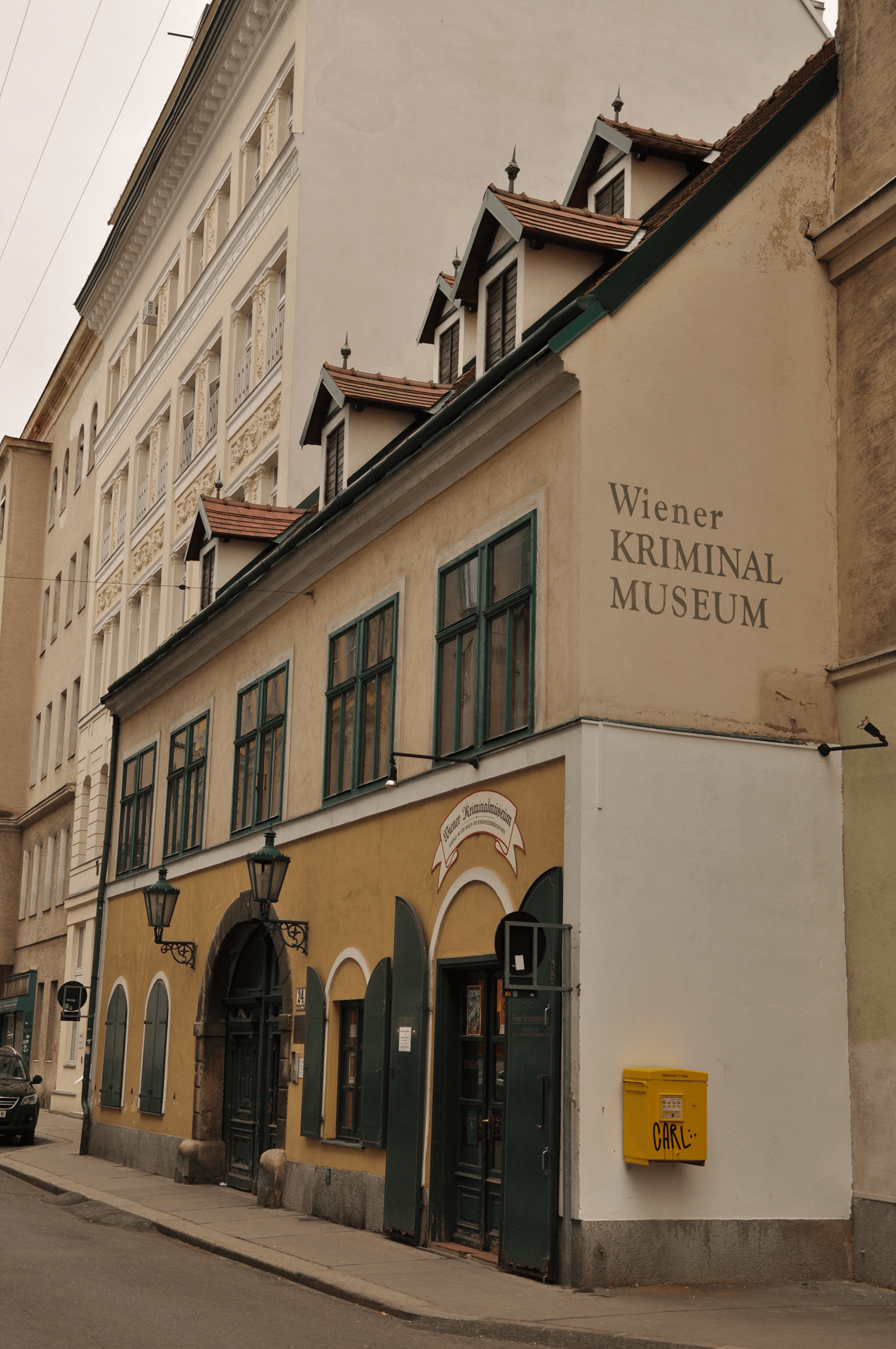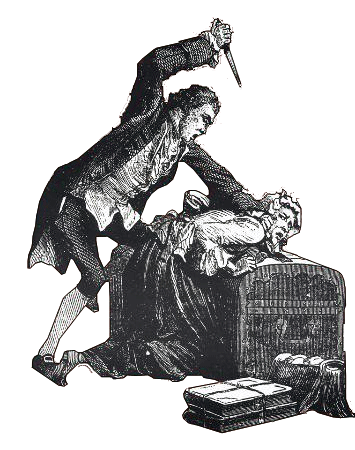The Seifensiederhaus
The building which houses the Museum of Crime today is called “Seifensiederhaus” (Soap Boiler House) in the registers of historical Viennese buildings.
Today’s Große Sperlgasse was given its name after the “Sperlsaele” (Sperl Assemby Halls), a meeting place for political, social and artistic celebrities during the first half of the 19th century. It was situated at the junction of the alley to Kleine Sperlgasse. Originally the Große Sperlgasse was also called Herrengasse (Alley of Lords). This was in a period when it was infact the main alley to the Jewish ghetto.
Also during this era at todays number 24 there was a house of the cantor, which served also at the Paris Hall, which meant something equivalent to the City Hall in the autonomous Jewish quarter.
In 1670, the ghetto was dissolved and the Jews had to leave. The Parish Hall became the possession of various civil tradesment and through the course of the centuries it has served as a soap works, an oil press, a carpender’s shop and from the 19th century on it was a butcher’s shop.
During the second Turkish siege in 1683 the building suffered severe damages as it lay outside the protection of the town walls. However in 1685 restoration began immediately upon the building as can seen by the date on the gusset of the archway.
After more than a hundred years, the traditional Tschippan Butcher’s Shop in Große Sperlgasse ended in 1960 and the building was aquired by various owners. In later years it was used in a disgraceful and devastating way as a warehouse. An antique dealer got the rights to use and wanted to use it both for residential and commercial purposes. He wanted to demolish parts of the building and replace them with new structures, but these plans were happily not realized and the house was once again offered for sale.
In 1988 the almost ruinous building became the acquisition of Dr.Regina Seyrl-Norman and under collapsing roofs, crumbling walls and mountains of rubble, the first plans were made for useful employment once again, after the completion of major renovations.
As well as being a home for her family it would also take the Viennese Museum of Crime. After two years of massive renovations at enormous costs, privately financed without public funding, and with infinite labour, the work was completed in 1991 and the Viennese Museum of Crime opened its gates.


